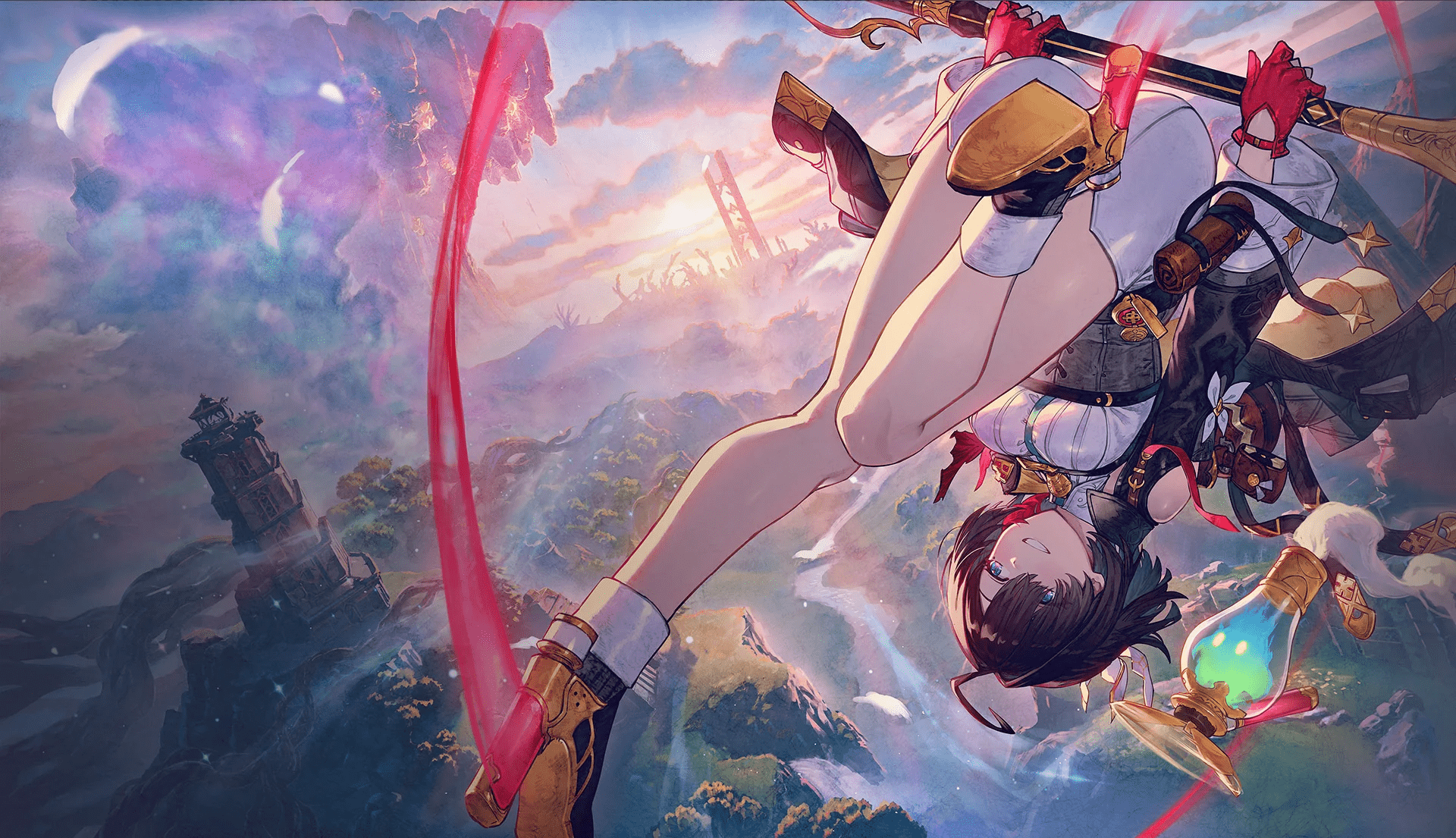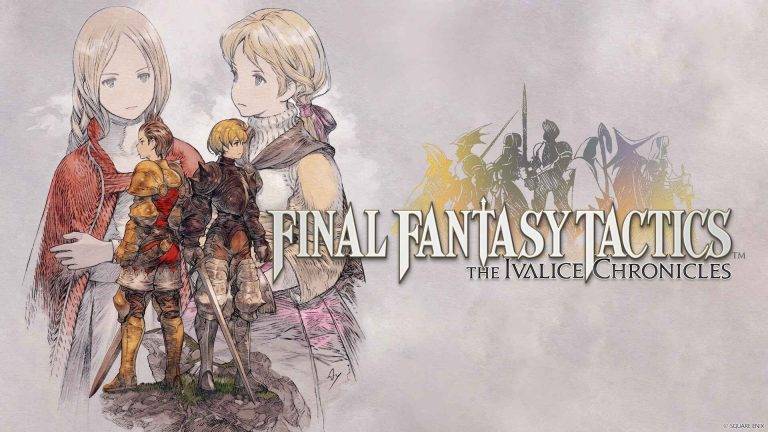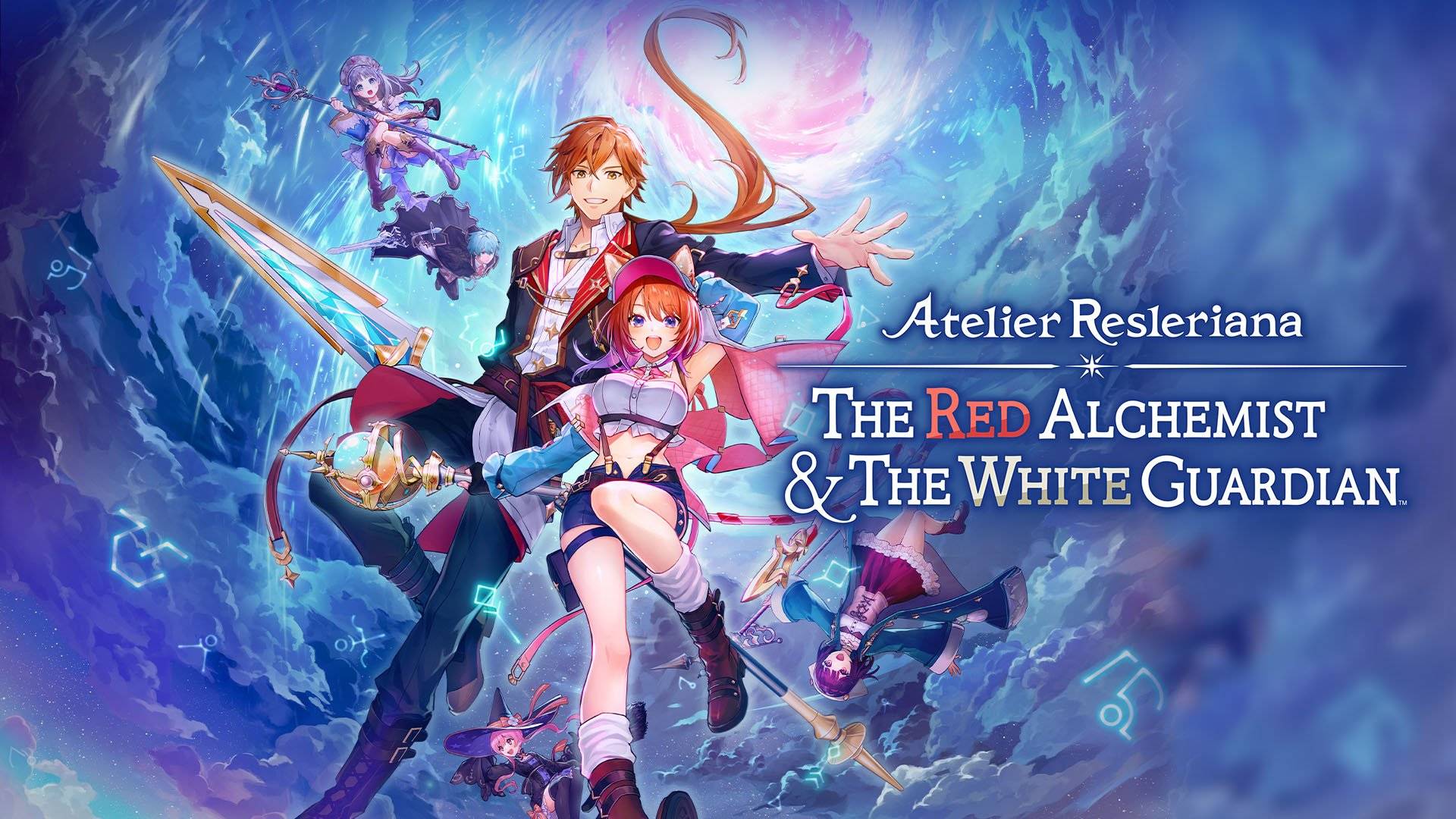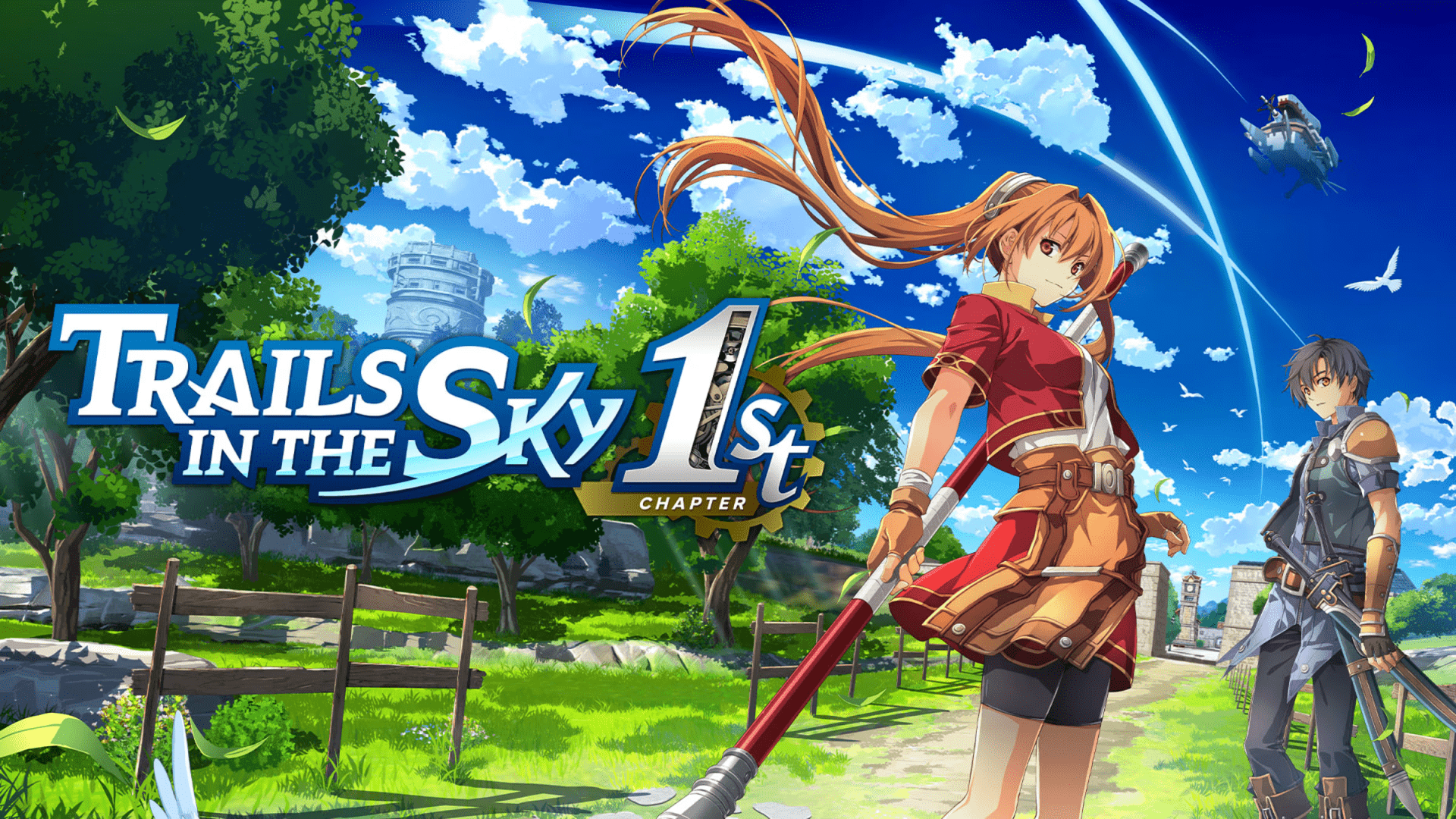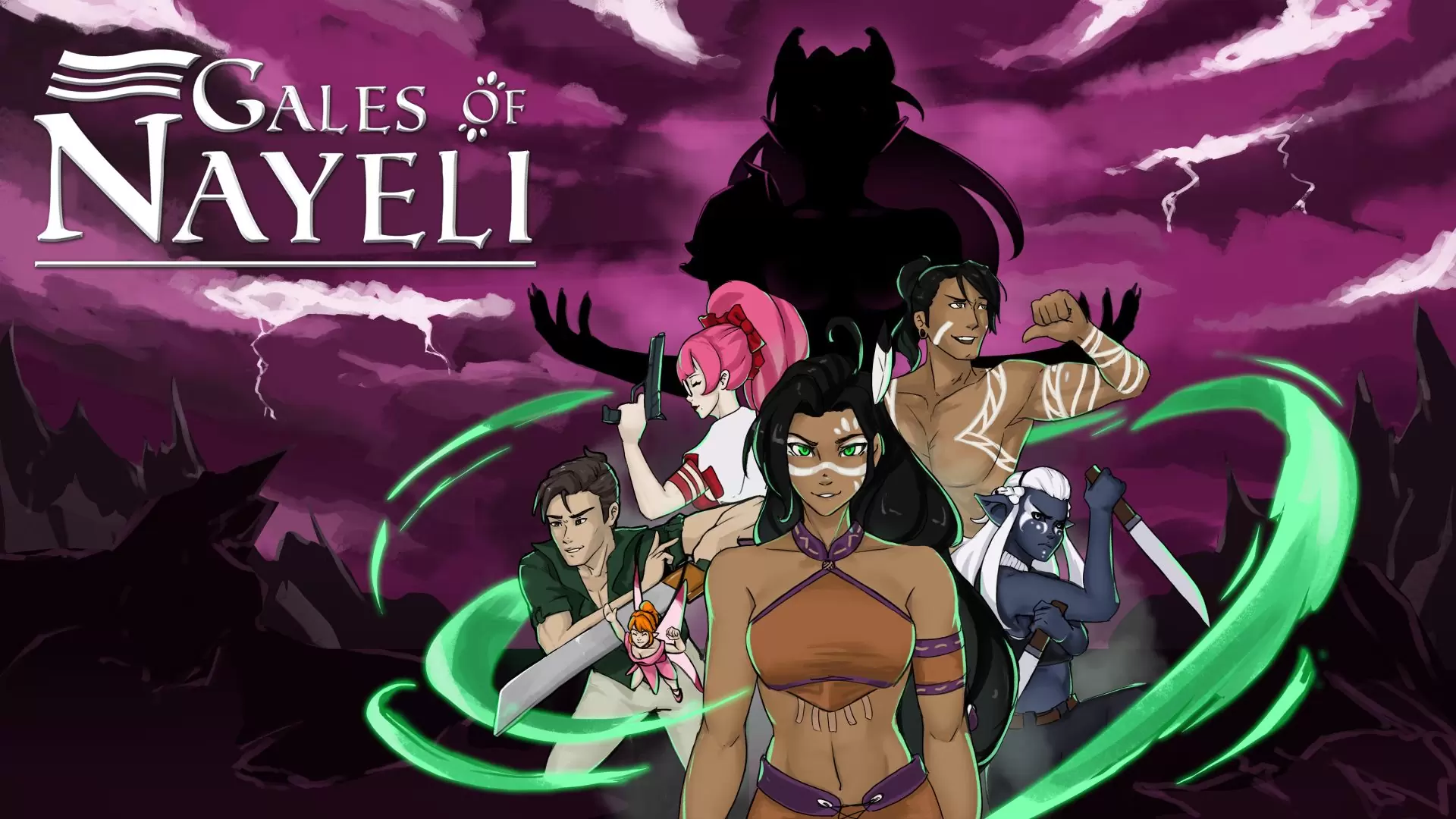An Alchemist in a Hostile Land – Atelier Yumia The Alchemist of Memories & the Envisioned Land Review
Atelier Yumia is the latest game in the long running Atelier franchise. Atelier is an IP with many games, with over 26 mainline games at the time of writing. You don’t need to have played any other Atelier games to be able to understand the plot of this game. Most Atelier games are organized into sets of trilogies, usually indicated by the latter half of the game’s title. Atelier Yumia is the beginning of a new trilogy of games and is a perfect entry point for newcomers of the franchise. Can it live up to the hype of the Atelier Ryza trilogy?
In this game you play as Yumia Liessfeldt, an alchemist journeying across the land of Aladiss. There was an incident that made alchemy a taboo profession and she wants to discover what caused this and why alchemists became so hated. She has Flammi, a flying magical creature who gives her advice. The land of Aladiss is mostly ruins and the gameplay is focused on finding memory vials to figure out the past which also reveal treasure and materials.
Unlike most other Atelier games, this game is interesting because it has an introduction where most characters are distrusting of Yumia because of her profession as an alchemist. In a way the hostility is similar to how characters behave in the beginning of Persona 5 or Tales of the Abyss. As you would expect the characters warm up to Yumia as she solves their problems using alchemy but it is a nice change of pace compared to the protagonist being a “chosen one” that everyone worships which too many modern games do.
What differentiates Atelier games is that while they are your standard JRPGs with characters, levels, stats and equipment, the focus is primarily on the item creation, also called alchemy or synthesis. Item creation used to be present in many JRPGs such as the Star Ocean series but is something you don’t see a lot of nowadays, with most games instead offering streamlined upgrade paths for equipment or cooking materials into recipes rather than full blown item creation.
This game isn’t just a potion brewing simulator — it has a complete narrative to play through full of many twists.
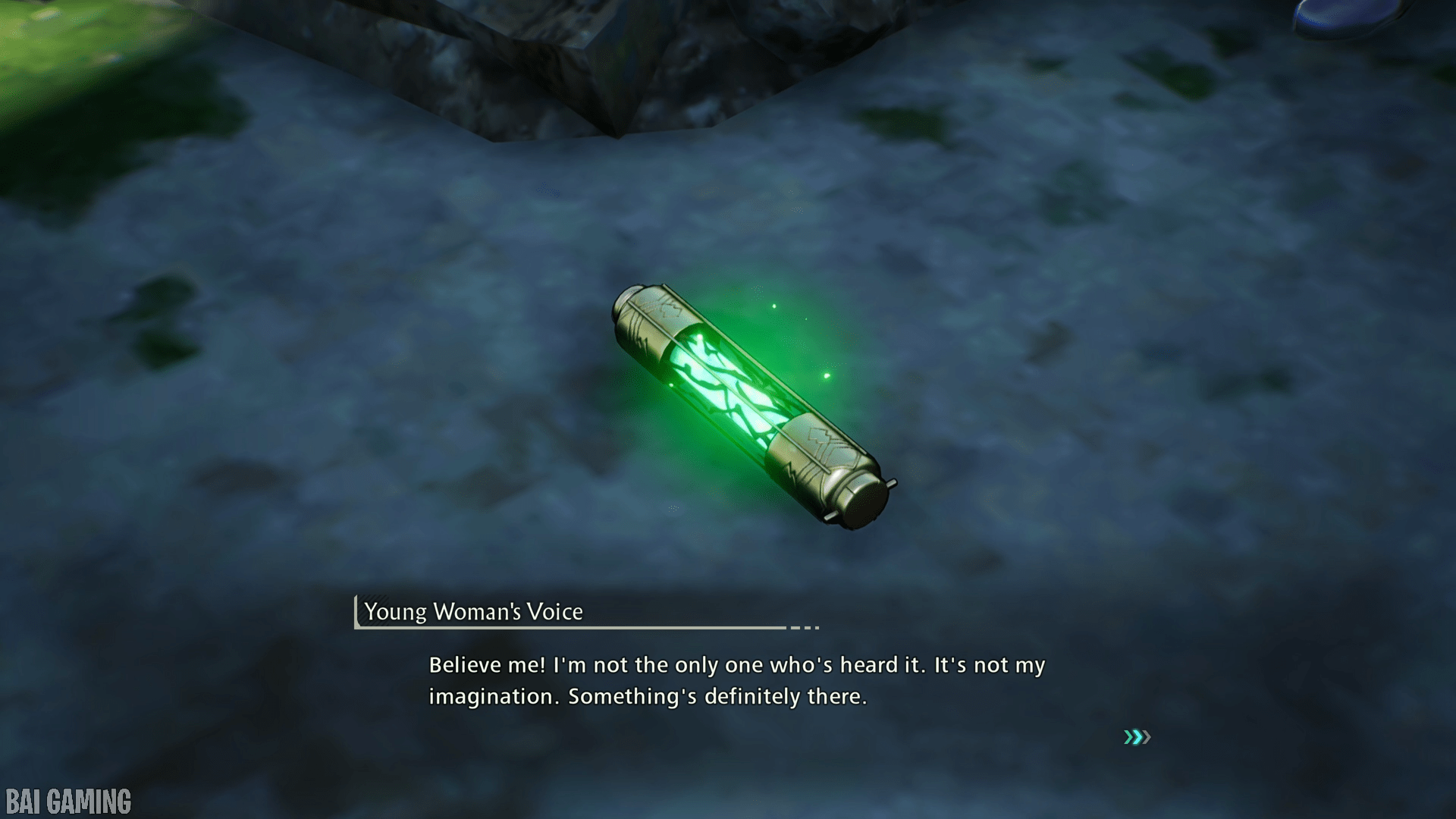
The gameplay is different compared to the older Atelier games, but not in a bad way. You gather materials from the regions you explore. You can whack almost anything to get materials or pick any flower you see. Yumia has a rifle she can use to shoot out of reach crystals for materials as well as for shooting switches to solve puzzles in dungeons. It’s a neat addition instead of just whacking bushes and trees all day and the player can craft different kinds of ammo for it as the game progresses for different effects.
As expected from modern Atelier games there’s no time limit for completing the game and the carry limit is surprisingly high, so you can gather all kinds of materials while exploring and then sort through them later at your base. You then use these materials to conduct synthesis to turn them into products, which can be quest items, equipment for your characters, or useable items in battle which can include buffs, debuffs, healing, or just potions to damage the enemy. Different recipes will require different kinds of ingredients, but in general the player will want to turn materials into a product of higher value.
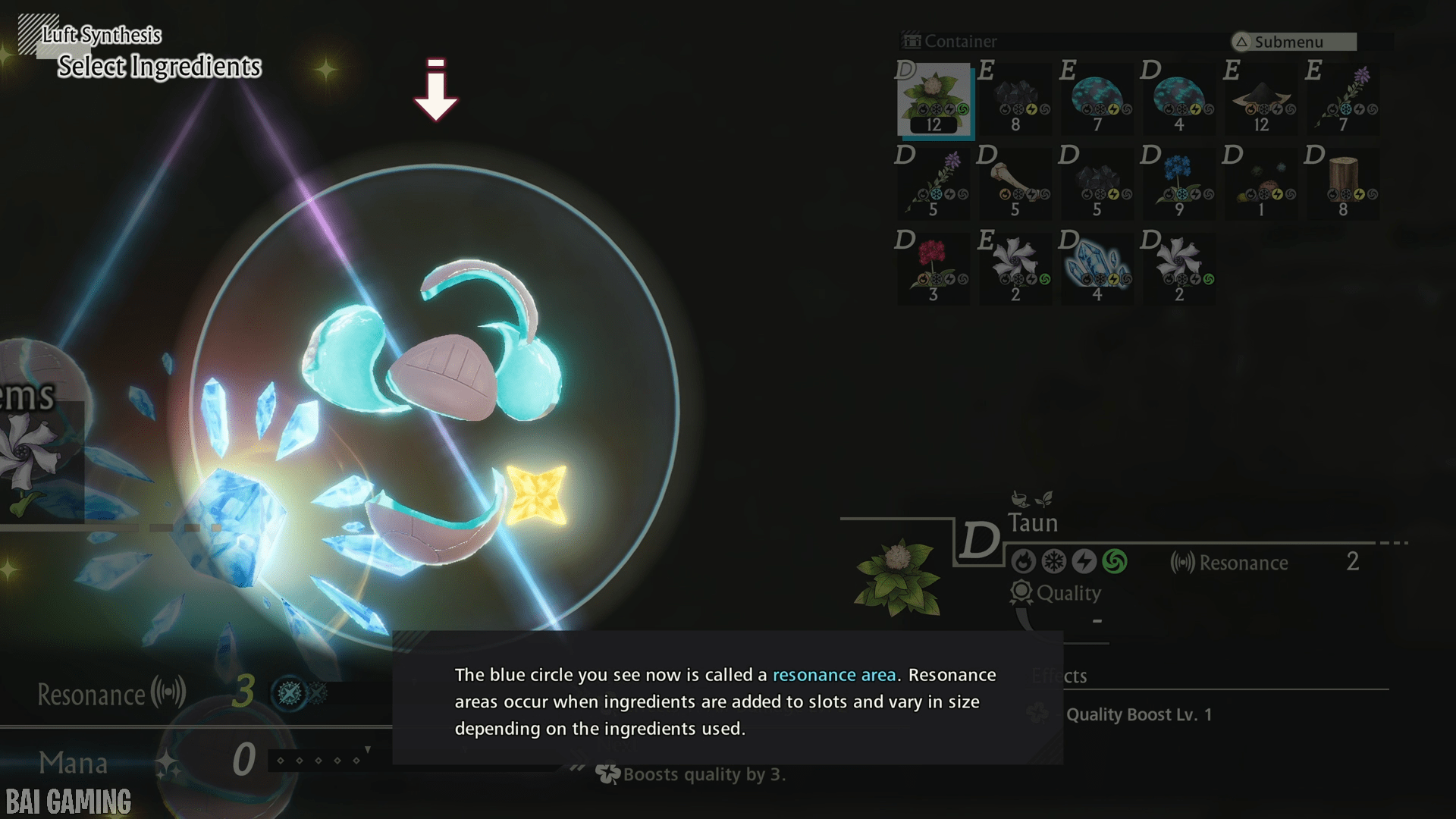
What’s different is that the continent is continuous instead of being divided into many different zones, making exploration feel significantly more natural and with significantly less downtime going through menus. The developers added standardized landmark blocks for Yumia to touch which unlock teleports as well as ziplines which allows Yumia to traverse across regions quickly.
The changes to the open world structure feel just slightly like an Ubisoft game, where the world is very open with a lot of collectibles and landmarks for the player to visit and checkmark off. At times it feels like there’s too much collectibles on the map. It’s not entirely bad and I found the open world to be a lot more fun than older games such as Atelier Firis, which attempted an open world but had many disappointments. In old games it was troublesome figuring out the materials and enemy spawns in each region, whereas now it’s just one giant continent divided into four main regions instead of dozens of tiny zones.
The regions also have monsters, which you can choose to fight or run from. If you fight them you can get rare drops to use for synthesis. You can actually play for a surprisingly long time until you’re forced to fight story bosses and this game has significantly less forced encounters compared to older games.
There is an energy meter that is consumed for performing actions on the field if the region is not purified (manabound regions) but there are plenty of recharge stations spread throughout dungeons and the open world. There’s also recharging stations at your bases so you can just return home to recharge Yumia’s proverbial battery.
I never found the energy meter decrease that much and even if you do pass out the punishment was never steep – it’s just losing a few items for passing out and you still get to continue playing. Being defeated decreases your battery and respawns Yumia at the last resting spot with no penalty as long as the battery isn’t under 50%. If it’s under 50% and Yumia is defeated in battle then you lose a portion of the items you gathered on your trip. You can always just warp back to the home atelier at any time to store your items into your chest to safekeep them and the teleport points are very reasonably spread throughout the region.
You can also make your own bases in pre-approved empty spots which is a really fun addition. It’s similar to making bases in Fallout 4. You can make your own building including all the walls, rooms and décor. You can handcraft it yourself or build it from pre-built layouts the game provides.
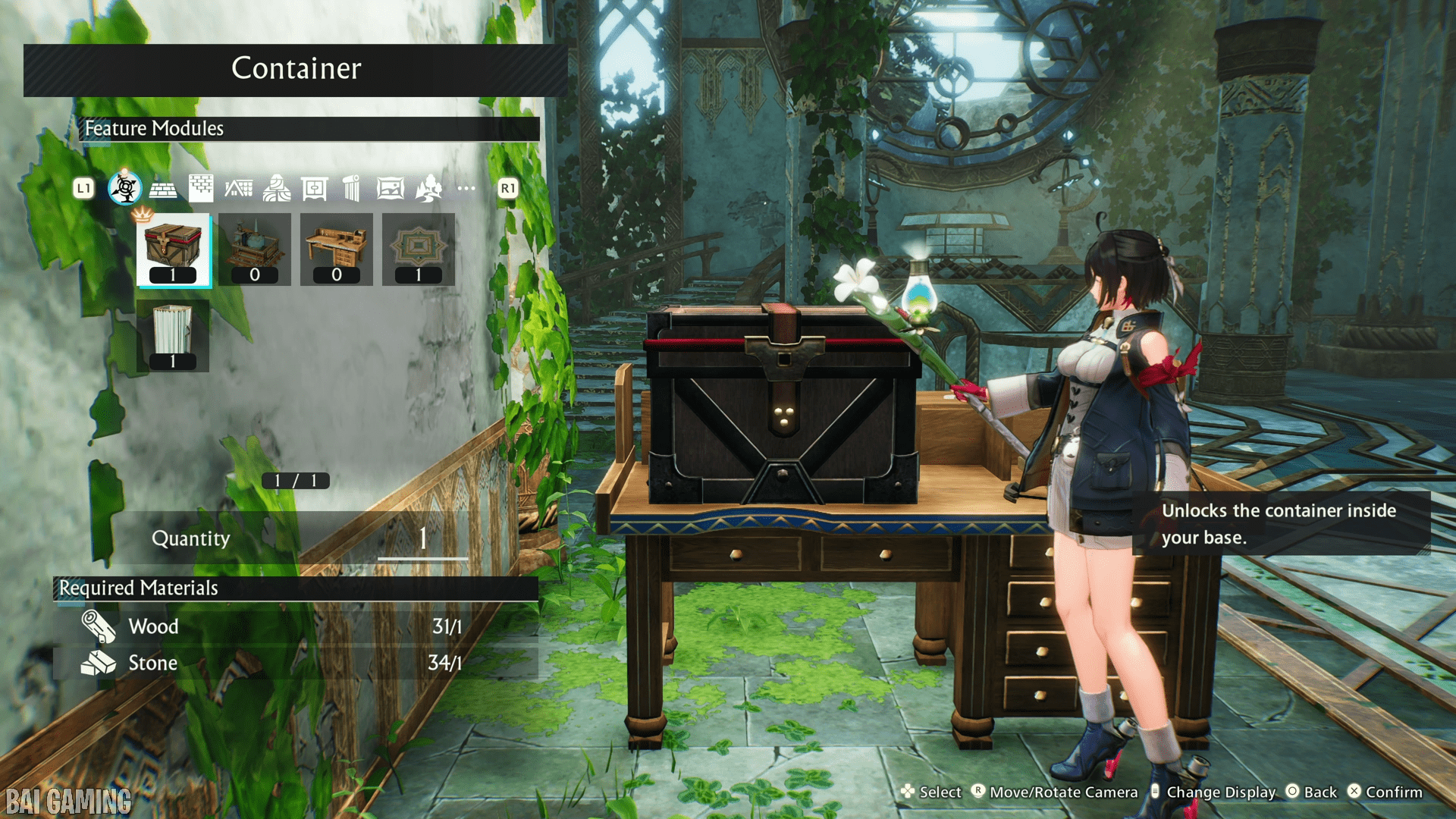
I didn’t like the costs for making a base. Unlike the regular alchemy and synthesis I found that it got very grindy. Whenever you gather in the game you get resources such as wood and metals used for base construction. The problem is that I found making your base got expensive fast. The continent is very large, meaning you have to build many bases throughout the game (or just warp back to the original main base the game providers).
The game does let you save your own layout to use for future bases and the base building system has a lot of great quality of life features, but unfortunately since it kept costing wood and metals I found myself relegated to making very simple workshops. Making fancy buildings and décor is purely cosmetic and doesn’t actually improve your abilities so I was disappointed I still had to spend resources on it. To prevent myself from having to grind resources I’d only craft shacks with the altar to perform synthesis, as well as a recharging station and a chest to store all my materials (the chests are all linked together).
Still, despite my criticisms the base construction is a really great addition that I’d like to keep seeing in future Atelier games. I’d imagine users are going to create really amazing ateliers to show off. It would be really neat in the future if the game made the resource cost less expensive and if you could download other users’ ateliers to use. This could be a way to implement connectivity between players. I think that more online features between players would be a big plus, like if you could grow a big garden of materials you need on your base and then letting other players access it. Not just plants but many kinds of unique ingredients. I miss seed gardening that was present in Atelier Ryza.
The combat has been changed and moves more in the direction of what Atelier Ryza was doing. The combat is real-time action and not turn-based anymore. You can whack enemies, with each button doing a different skill you can choose. You can also parry, block or dodge the enemy attacks as well. You can also use items which will slow down time significantly in real life for you to choose which item to use and which enemy or ally to target.
Your items have a cooldown now so you can keep using them in battle and your items are replenished automatically after the battle right from the start of the game, so you can use the best materials you have to make the strongest bomb ever and you’ll be able to use it again each battle with no stress. This is in contrast to the much older Atelier games, where you had to keep gathering materials to make hundreds of bombs that would keep getting used up (or it would require a resource to replenish or duplicate items).
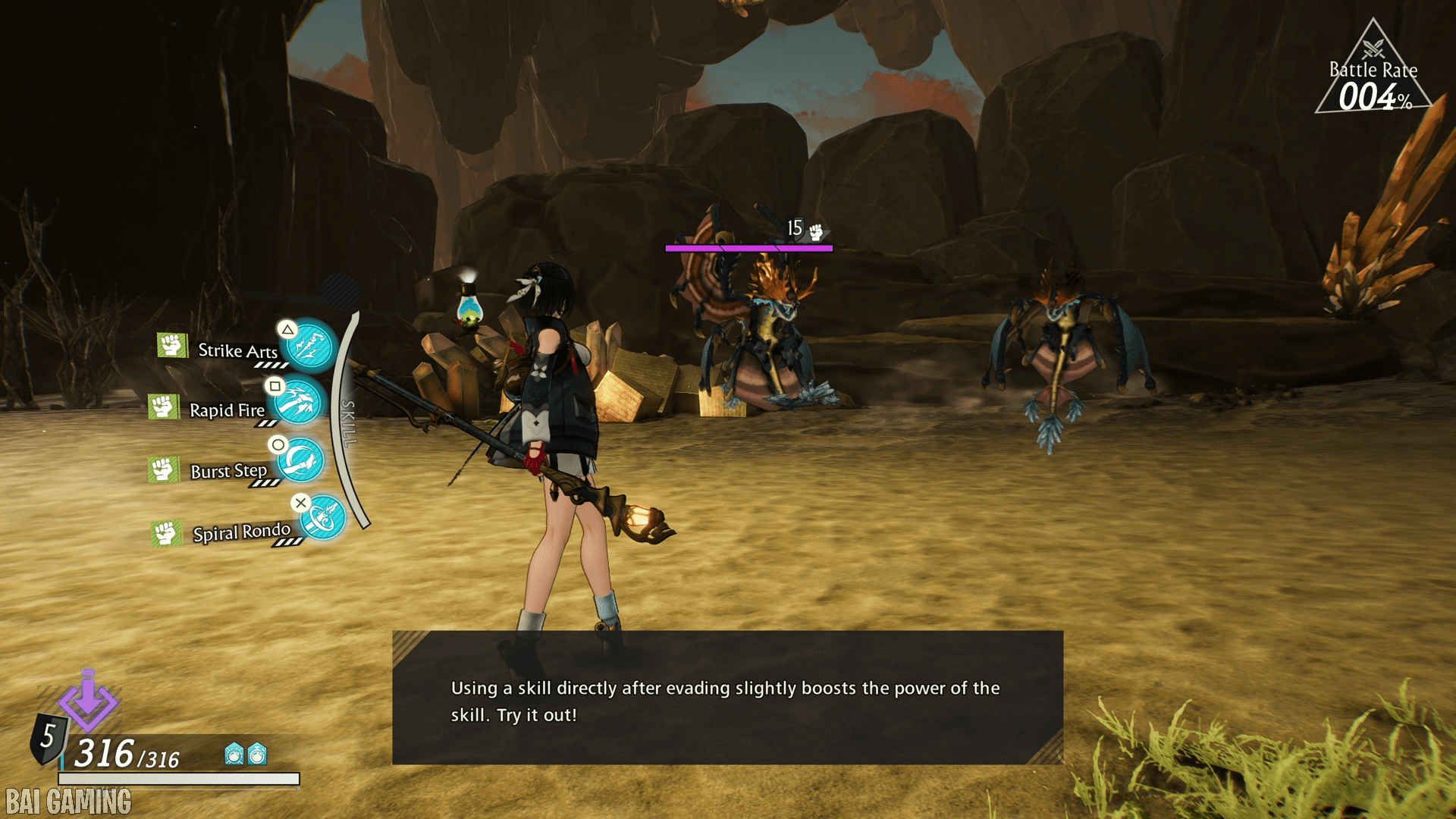
The combat is a little underwhelming compared to games with better action combat systems such as Final Fantasy VII Rebirth or Ninja Gaiden. The regular monster attacks are very underwhelming, but the bosses have more interesting move-sets and can pose a slight challenge if you’re unprepared. I think that some of the animations are a tad too flashy and there’s too much going on in the screen at times. The game would often freeze for a second on purpose and zoom to show something important happening in the battle, such as a character defeating an enemy or one of your allies being defeated, but I found the constant stopping of time to mess up my timings and strategy. I understand the developer’s intentions but I found it annoying.
I really like that the game encourages players to think smart. The item creation is very complex but the game slowly trickles information to the player using tutorials. The alchemy and synthesis is easy to learn but tricky to master. I won’t describe all of the intricacies of how alchemy works but you pretty much gather materials in the zones and mix them together to make powerful equipment.
You choose materials to increase the product’s resonance and mana as high as possible. Ingredients unlocked later in the game might be more rare and can make even more powerful equipment. By using better materials your finished product will have more effects – such as a bomb dealing more fire damage or a healing item now being able to heal your allies to full rather than half. In some cases you can even use finished products themselves as the ingredients for more complicated alchemy recipes!
The game wants you to experiment, but even if you don’t want to you can do auto-synthesis. The auto-synthesis is improved from the older games, but it still might consume rare items that you don’t want to waste. It’s still a good option if you don’t want to learn the synthesis and want to brute force your way through the game but I wouldn’t personally recommend it if possible.
You unlock new recipes by meeting certain requirements. Most of the time it’s gathering the materials used in the recipe and spending crystals. Crystals are a new addition to the series and can be found at mana geysers, which are random gathering spots in zones indicated by a line. There’s also bigger red crystals where you can fight several enemy encounters in exchange for crystals. I found them tricky to get earlier in the game but as I continued exploring I found them appearing more often, I think turning off quest tracking line helped me see the mana geyser tracking lines more easily.
The other requirement I mentioned was that you usually need to find the materials for the recipe to unlock it. Usually this is from regular exploration, and as you progress the story and unlock new regions you can find new exotic materials and unlock the associated recipes. Since there’s no time limit the player can gather as many materials as they want while exploring so unlocking recipes is never too hard, it’s just a matter of spending time.
Some recipes require materials from other recipes as prerequisites but they’re clearly labeled. In older Atelier games the recipe unlock system was bad, such as in Atelier Firis where the requirements were vague and the protagonist Firis had to actually dream up the idea for a new recipe.
From what I’ve played Atelier Yumia doesn’t use books to learn recipes and even the currency (Cole) is barely used anymore. Older games used to require the player to make high quality items to sell at shops to make currency to spend on books to learn new recipes, but in Atelier Yumia you get experience, skill points and recipes from exploration and gathering materials instead and I never found myself using the NPC shops. It’s a great change of pace because it’s not grindy at all, you just need to explore the regions.
The quality of life features in this game are phenomenal and is honestly magnitudes higher than its predecessors. Once you gathered a material or fought a monster you can look it up in the in-game menus and the game will not only tell you where you found it so you can find it again but it’ll even give you a marker to find it too. In old games I hated going through menus (or online wiki’s), finding out it’s in a forest and then having to figure out where that forest was on the map, the quest marker is really amazing improvement especially in a big open world game. You can definitely argue that Atelier Yumia is backwards in some respects but the quality of life enhancements with the map and alchemy in general are astounding.
A new addition is also being able to “upgrade” your recipes by spending more crystals after unlocking it. Doing this allows you to make the product even better such as increasing its quality more or allowing you to add more ingredients during synthesis. I really liked this because if you liked using one kind of item or equipment you could improve it more rather than spending crystals unlocking other recipes you don’t want.
I really liked one character a lot more than the others, so I upgraded her weapon recipe rather than everyone else’s. In this game the characters each have their own type of unique weapon, but all armor and accessories can be used by any party member.
One trick I used to get through the game easily was unlocking a recipe for a better kind of ingot, then upgrading that recipe, then making many powerful ingots, then upgrading the character’s weapon recipe and putting as many ingots into it. I did a similar process for armor creation as well, where I upgraded cloth recipes and stuffed many powerful cloths into a piece of armor. Many weapons, armors, and accessories each have their own unique effects as well that can be unlocked from using materials.
There’s also a quality stat, a number from 1 to 999 given to all items which does impact how well it performs. By carefully making more higher and higher quality items you can actually make powerful high quality materials to use to create high quality products. This is loosely referred to as a synthesis loop (not to be confused with material loops which refer to the individual loops you put materials in), and you can keep making items to then use as inputs to make other items in a loop to keep making more and more higher quality products.
Traits have been changed in this game compared to older Atelier games. You unlock trait slots when making equipment and accessories which will then allow the player to equip up to 3 traits to them. Traits are now attached to equippable crystals now and you can combine these crystals together to make better traits. I found the traits to be a bit grindy as you had to find them in treasure chests in dungeons and monster drops but it’s another way to increase the characters’ stats. I do somewhat miss the old system of finding rare traits on materials themselves and spreading those traits to all your materials through careful synthesis.
Atelier Yumia does have a progression system, where most actions in the game will give you skill points to spend on skills. These skills let you increase your quality limit, get more rewards from monsters, reward more crystals from mana geysers, unlock more combat features and more. These skills are broadly divided into synthesis, gathering and combat skills and you can choose whichever you like to make the game easier for the way you want to play it.
I found the game to be on the easy side, but if it’s your first Atelier game you may struggle at first to learn the nuances of the game. If you’ve played Atelier before you’ll probably find it easy too. The game has difficulties from easy to hard but even hard mode is easy for returning players. It’s pretty easy to break the game by crafting powerful items and equipment but this is true of most Atelier games and there’s not much the developers can do to make it harder without alienating newcomers. There are many interesting boss fights, some are challenging but most are very fair and you can even dodge and parry all their moves if you’re good at action combat.
The world design and graphics are beautiful like in all Atelier games. The character designs are top notch, especially Yumia with her vial heels and the kemonomimi races look great as well.
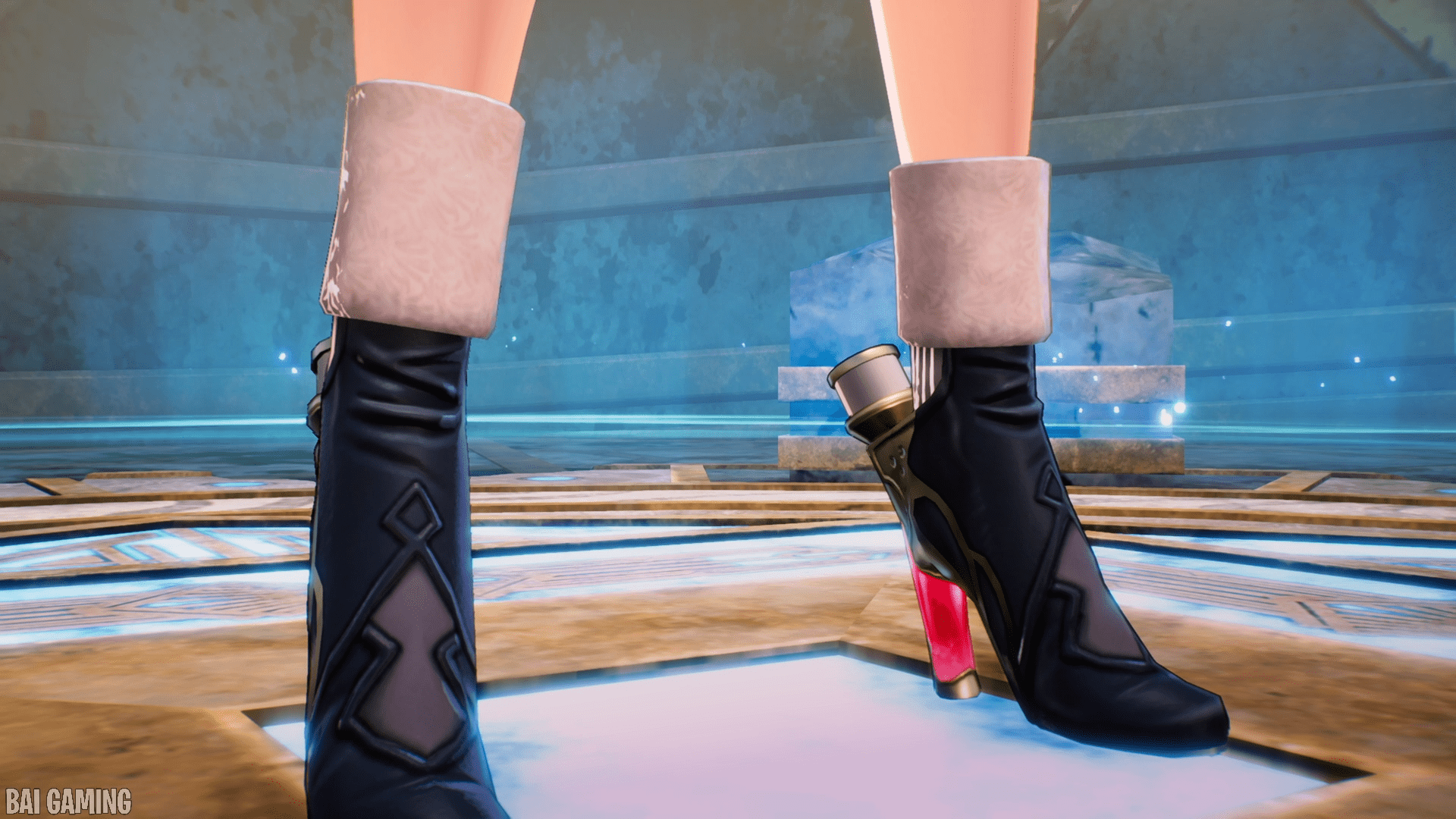
The game is a lot more somber compared to older titles and features Yumia exploring many ruins. It really captures the feeling of a dreadful world and I’d say that this game is what the “Dusk trilogy” should’ve been in the earlier Atelier games. The writing is great with many twists and many supporting characters to recruit. All of the supporting characters have their own backstories and the illustrated still graphics are beautiful. Benitama is a very skilled illustrator and Gust is very lucky to have them! The cast of villains is a welcome change compared to older games that had a random monster be a final boss and I really liked the villain designs.
Although Atelier Yumia is a one of a kind JRPG, it does have its flaws. Although the production quality has increased significantly since Atelier Ryza, the cutscenes are mostly just talking scenes with not enough action. The story and lore of the continent is interesting but a lot of the dialog in this and the Ryza games are very long-winded and the story takes a long time to get exciting.
The lack of a dub also contributes to the plot feeling slow. The Japanese voice actors do a great job but reading long cutscenes with subtitles becomes boring after a while. The old Atelier games before Atelier Lydie & Suelle used to have dubs. I was hoping that with Ryza’s success the publisher would consider going back to adding a dub to future games.
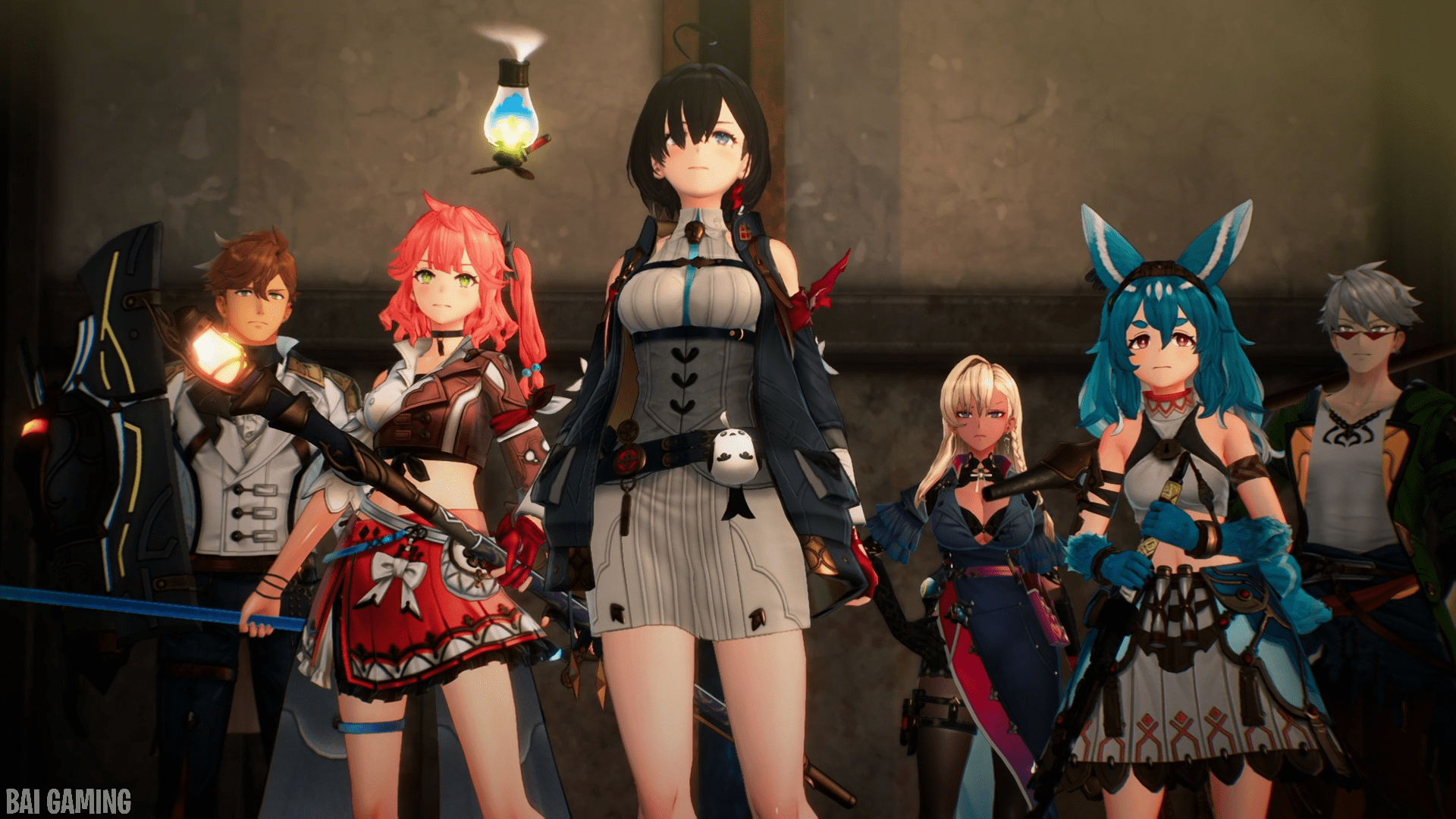
The introduction of the game is ill-fitting for an Atelier game as well. It starts off like a Michael Bay movie, with Yumia and her companions going through a dungeon and fighting enemies in an action sequence where they smash a window. I’m exaggerating, it’s not a bad introduction by any means but the introduction of the game isn’t representative of the entire game. After a few hours you can have fun with alchemy as usual and play the game at your own pace in a massive open world.
There’s optional sidequests which mostly involve collecting and handing in synthesized item missions to NPCs. There are unique companion sidequests for each supporting character. Unfortunately I found the companion sidequests to be very bland compared to older Atelier games. The interesting scenes of your companions are told during the main story which makes sense, as the developers would certainly want more players to see it. But as a result of this the companion sidequests end up feeling very generic. The companion sidequests have very generic objectives too such as synthesizing an item or defeating an enemy. They weren’t exciting but sometimes there was an interesting fact or two you could learn about a companion.
The world design is great but examining it as a whole it felt a bit bland. I wish that there were more distinct biomes in the world. I understand that this game is meant to be a mostly barren and sick kind of region but it did feel lifeless.
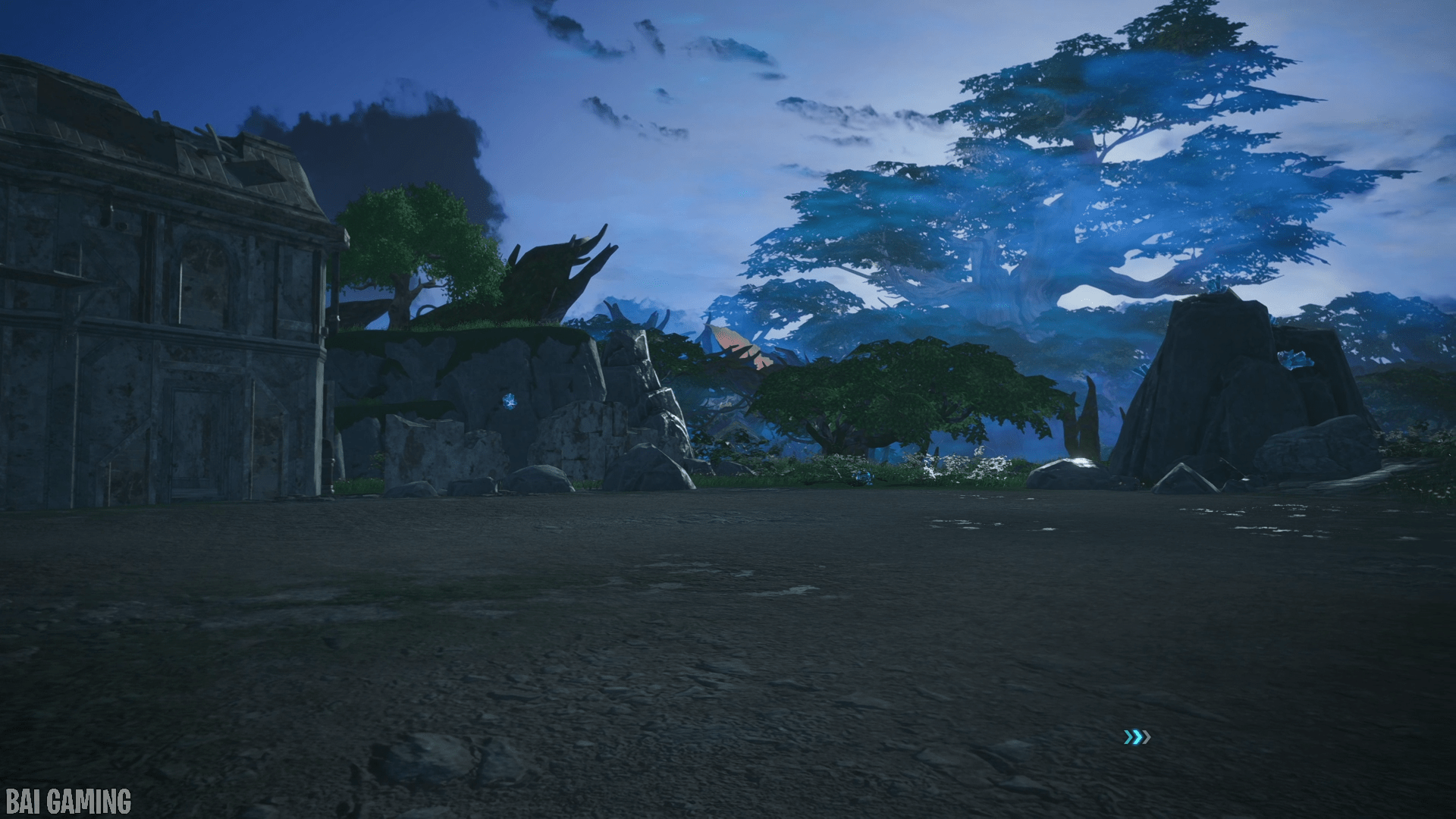
I would’ve liked a city in a corner where there were townspeople. The cities in Atelier Sophie 2 were really colorful and bustling for instance, even if they didn’t serve a specific gameplay purpose. Without giving away spoilers I also found the final region of the game to be disappointing as well. The ruins are great to explore but I wanted more diversity. Exploring ruins is starting to become very overdone in the Atelier series.
The puzzles in the ruins are also a bit too easy. I’m not saying to have more difficult puzzles, but if there was more variety it would be appreciated. The puzzles are often just pushing a block from another room onto a tile to open a gate. There’s also puzzles where you need to rotate blocks to light up rays in a certain direction. It serves to break up gameplay but I don’t think they were really necessary. I’d rather just collect materials and explore dungeons without simple puzzles taking up my time because the alchemy system is the main strength of the game and it should play into its strengths more.
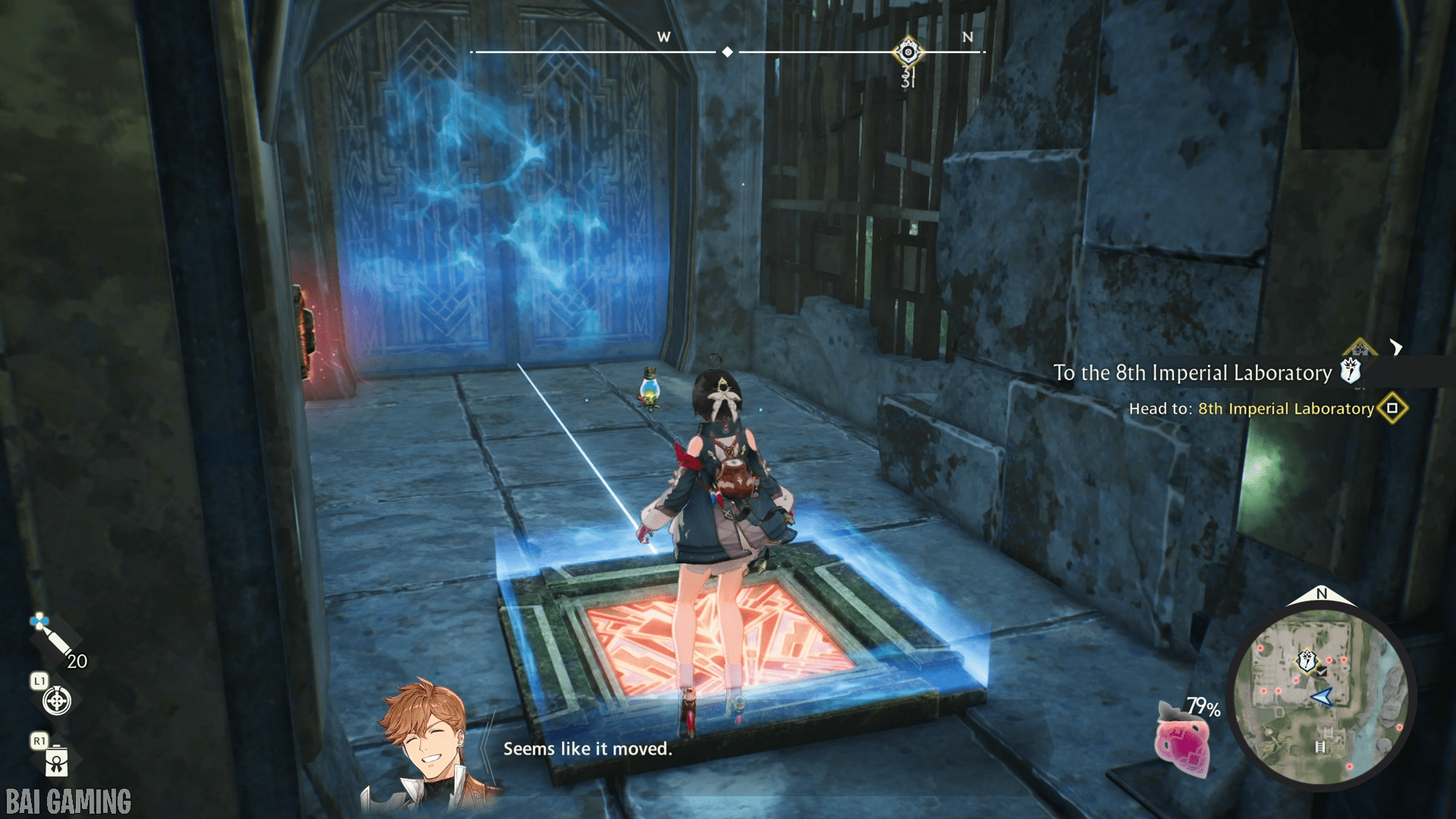
The developers did a good job of removing bloat from the open world. Atelier Ryza had a lot of regions where there was a lot of unnecessary empty space and I was surprised by how quickly I could get through the regions in Atelier Yumia. The collectibles such as fast travel points, dungeons to explore and materials in general are placed more purposely in Atelier Yumia. Although the world is dark and scary it’s not as intimidating in size as it was in Atelier Ryza 3, which was a completionist’s nightmare. The motorbike is also unlocked partway through the story and makes travelling empty corridors far faster. Its controls aren’t the best but it’s really good for long straight zones you need to get across.
Although I made a few criticisms of the game it’s still a very fun game especially if you’re looking for a JRPG with fun item creation. It takes a while to get started but the plot and characters are some of the best especially the cast of villains. Once you understand the item creation mechanics it becomes downright addicting, but even if you don’t want to learn alchemy there’s options such as auto synthesis that can do it automatically. Even if you don’t want to make powerful equipment or items you can still get through the game by blocking, parrying, and dodging the boss’s moves. After the on-rails introduction in the game you’re free to do anything you like. I found that a lot of JRPGs are very similar nowadays but the item creation really sets Atelier Yumia apart from the rest and it’s a great entry point into the series.
Atelier Yumia: The Alchemist of Memories & the Envisioned Land
 Our Score: Excellent
Our Score: Excellent
Pros
- The best item crafting system in any JRPG. No other game has the player collect and mix together materials like this series does.
- Quality of life improvements such as being able to find any material or monster previously found is amazing.
- Very interesting companions with intriguing backstories. The villains are also very fearsome and have great designs.
- The cutscenes are mostly talking and feel very drawn out. No dub option. The story is very slow to get started.
- If you’ve played Atelier games before this game is very easy.
- The dungeons and their puzzles are bland.
– Brandon Harris
Reviewed on the PS5
Recent Posts

